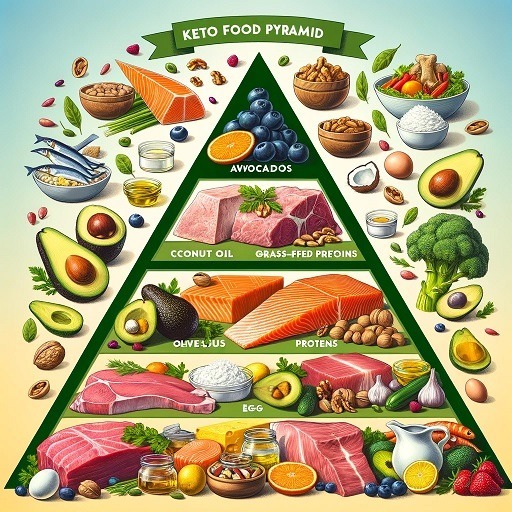The Science of Motivation: Understanding What Drives Us
Hello there! Have you ever wondered why some days you feel incredibly driven to tackle your goals, while other days, it feels like a struggle just to get started? Understanding the science of motivation can help unlock the secrets behind what drives us and how we can harness this power to achieve our dreams. In this post, we’ll delve into the fascinating world of motivation, exploring what it is, the psychology behind it, and practical strategies to keep yourself motivated. Whether you’re looking to boost your professional performance, personal growth, or simply get through your daily tasks with more enthusiasm, this guide is for you.
What is Motivation?
Definition of Motivation
Motivation initiates, guides, and sustains goal-oriented behaviors. It drives you to act, whether it’s reading a book to gain knowledge or going to the gym to get fit. Motivation can be both intrinsic, driven by internal rewards like personal satisfaction, or extrinsic, driven by external rewards like money or recognition.
Types of Motivation There are two primary types of motivation:
- Intrinsic Motivation: This comes from within. You do something because it is inherently interesting or enjoyable. For example, you might play a sport because you love the game.
- Extrinsic Motivation: This is driven by external factors. You do something because it leads to a separable outcome. For example, you might work overtime because you want to earn more money.
Understanding what type of motivation drives you helps tailor strategies to keep you moving towards your goals.
The Psychology Behind Motivation
Theories of Motivation
Several theories explain how motivation works. Let’s look at a few key ones:
- Maslow’s Hierarchy of Needs: This theory suggests that people are motivated by five levels of needs: physiological, safety, love/belonging, esteem, and self-actualization. According to Maslow, higher needs in the hierarchy begin to emerge when lower needs are satisfied.
- Self-Determination Theory (SDT): This theory emphasizes three innate psychological needs: autonomy, competence, and relatedness. When these needs are fulfilled, they lead to higher levels of motivation and psychological well-being.
- Expectancy Theory: This theory posits that motivation is determined by a combination of how much we want something and how likely we think we are to get it.
Motivation and the Brain
The science of motivation closely links to brain function. The neurotransmitter dopamine plays a crucial role in the motivation process. It helps regulate our emotional responses and plays a role in reward-motivated behavior. When you set a goal and achieve it, dopamine creates feelings of pleasure and satisfaction, reinforcing the behavior and encouraging you to repeat it.
Intrinsic vs. Extrinsic Motivation
Intrinsic Motivation
Intrinsic motivation comes from within you. It’s driven by personal satisfaction or the joy of doing something. For example, you might write a book because you enjoy writing and want to share your story with the world. Intrinsic motivation is often more sustainable over the long term because it’s tied to your core values and interests.
Extrinsic Motivation
Extrinsic motivation is driven by external rewards. This could be money, grades, praise, or any other kind of reward. For instance, you might study hard to get good grades or work extra hours to earn a bonus. While extrinsic motivation can be powerful, it might not be as sustainable as intrinsic motivation if the external rewards are removed.
Balancing Both
For optimal performance and well-being, it’s beneficial to find a balance between intrinsic and extrinsic motivation. Combining internal satisfaction with external rewards leads to a more fulfilling and motivated life.
Factors Influencing Motivation
Personal Factors
Your personality, interests, and values significantly influence your motivation. Understanding what makes you tick can help you set goals aligned with your true self. For example, if you value creativity, you might find motivation in activities that allow you to express yourself artistically.
Environmental Factors
Your environment also plays a crucial role in shaping your motivation. This includes your physical surroundings, social influences, and cultural background. Creating a supportive environment that encourages positive behaviors can boost your motivation. For instance, working in a clean, organized space helps you stay focused and productive.
Biological Factors
Genetic and physiological factors also impact your motivation. For example, some people are naturally more energetic and enthusiastic, while others may have a tendency towards low energy. Understanding your biological predispositions helps you develop strategies to work with, rather than against, your natural inclinations.
Techniques to Boost Motivation
Setting SMART Goals
One of the most effective ways to boost your motivation is to set SMART goals. SMART stands for Specific, Measurable, Achievable, Relevant, and Time-bound. By setting clear and achievable goals, you create a roadmap that guides you toward your objectives. For example, instead of saying, “I want to get fit,” set a SMART goal like, “I will jog for 30 minutes every morning for the next month.”
Positive Reinforcement
Positive reinforcement involves rewarding yourself for making progress toward your goals. This can be as simple as treating yourself to a favorite snack after completing a task or taking a break to enjoy a hobby you love. Positive reinforcement helps to create a positive feedback loop that encourages you to keep going.
Building Habits
Forming good habits is crucial for maintaining long-term motivation. Habits automate behavior, reducing the need for willpower. Start by incorporating small, manageable changes into your routine. For example, if you want to read more, start by reading for just 10 minutes before bed each night.
Visualization and Affirmations
Visualization and affirmations are powerful tools for boosting motivation. Visualization involves imagining yourself achieving your goals, which can increase your belief in your ability to succeed. Affirmations are positive statements that reinforce your goals and self-worth. For example, you might say to yourself, “I am capable and resilient” each morning.
Overcoming Common Motivation Barriers
Procrastination
Procrastination is one of the biggest barriers to motivation. Combat it by breaking tasks into smaller, manageable steps and setting deadlines for each step. Using techniques like the Pomodoro Technique, where you work for 25 minutes and then take a 5-minute break, can also help maintain focus and productivity.
Fear of Failure
Fear of failure can paralyze your efforts. Overcome this by reframing failure as a learning opportunity. Remember, every failure is a step closer to success. Embrace a growth mindset, which views challenges as opportunities for growth rather than threats to your self-worth.
Lack of Energy
Maintaining your physical and mental energy is crucial for staying motivated. Ensure you get enough sleep, eat a balanced diet, and exercise regularly. Incorporate relaxation techniques such as meditation or deep breathing exercises to reduce stress and recharge your energy levels.
The Role of Mindset in Motivation
Growth Mindset vs. Fixed Mindset
Adopting a growth mindset significantly enhances your motivation. A growth mindset is the belief that your abilities and intelligence can be developed through effort and learning. This contrasts with a fixed mindset, which views abilities as static. Embrace challenges, persist in the face of setbacks, and see effort as the path to mastery.
Self-Belief and Confidence
Believing in yourself and your abilities is essential for maintaining motivation. Build your self-confidence by setting and achieving small goals, celebrating your successes, and focusing on your strengths. When you believe in your potential, you’re more likely to stay motivated and persevere.
Motivation in Different Life Areas
Professional Motivation
Staying motivated at work can be challenging but rewarding. Set clear career goals, seek out opportunities for growth and learning, and maintain a healthy work-life balance. Find meaning in your work by connecting it to your personal values and long-term goals.
Personal Motivation
Personal goals can include anything from hobbies to personal development. Stay motivated by setting goals that align with your passions and interests. Surround yourself with supportive people who encourage your growth and celebrate your achievements.
Academic Motivation
For students, maintaining motivation can be particularly challenging. Stay motivated by setting academic goals, seeking help when needed, and finding a study routine that works for you. Remember to balance your studies with leisure activities to avoid burnout.
Case Studies and Real-Life Examples
Success Stories
Learning from others’ success stories can be incredibly motivating. For example, consider the story of J.K. Rowling, who faced numerous rejections before achieving massive success with the Harry Potter series. Her perseverance and belief in her work can inspire you to stay committed to your goals.
Lessons Learned
Reflecting on your own experiences also provides valuable insights. Think about a time when you overcame a challenge and achieved something significant. What strategies did you use? How can you apply those lessons to your current goals?
Conclusion:
In summary, understanding the science of motivation helps you harness its power to achieve your goals. By exploring the psychology behind motivation, balancing intrinsic and extrinsic motivators, and implementing practical strategies, you can stay motivated and reach new heights. Remember to set SMART goals, use positive reinforcement, build good habits, and maintain a growth mindset. Overcome barriers like procrastination and fear of failure by embracing challenges and believing in yourself.
Now that you have the tools and knowledge to boost your motivation, it’s time to take action. Start by applying one or two strategies from this post and see how they impact your motivation. Keep experimenting and refining your approach until you find what works best for you. Stay motivated, stay committed, and remember – the journey to success starts with a single step. You’ve got this!
For more resources on the science of motivation and personal development, check out our recommended reading list and join our community of like-minded individuals striving for success. Let’s achieve greatness together!






